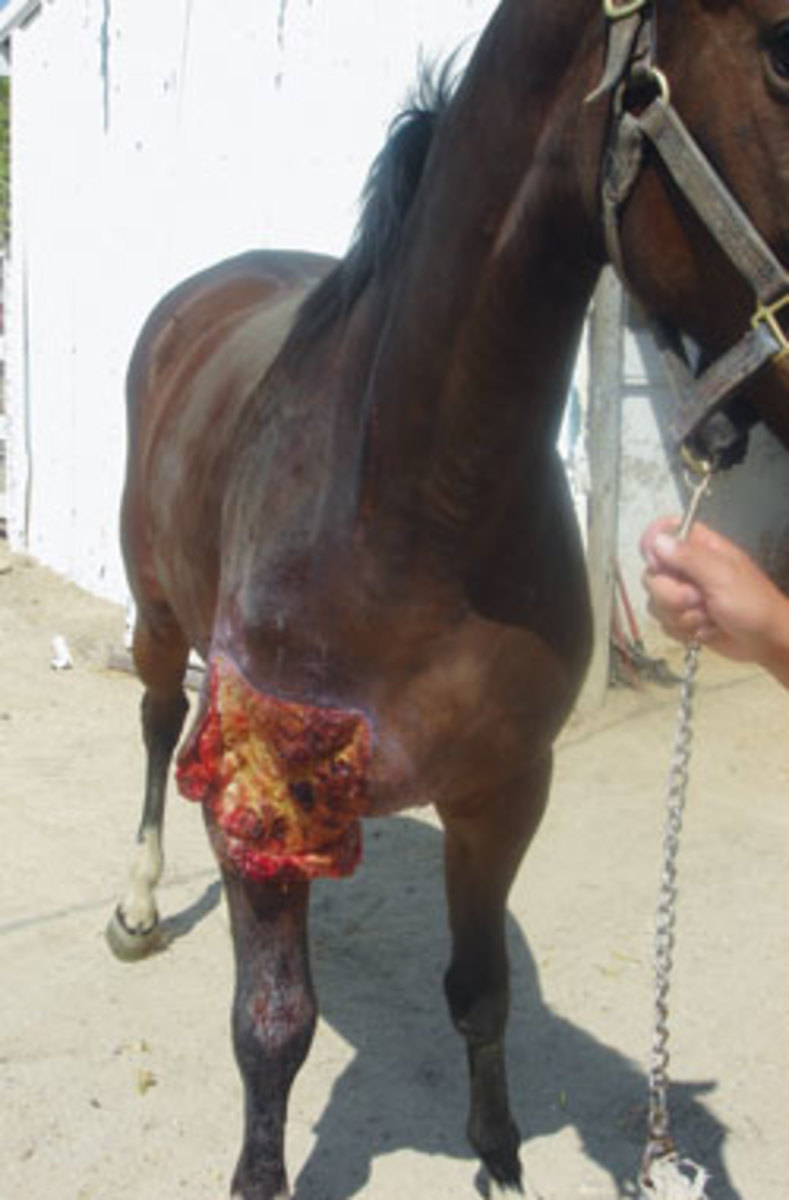
Wound healing in horses can be problematical because of differences in how they heal. Wounds of the upper body of the horse, above the hock or knee, heal amazingly well and relatively quickly. With wounds of the distal limbs on horses, however, it can be frustrating and time consuming to achieve the desired result.
As I’ve mentioned in previous articles, I often use a case I see in my practice as a basis for a column. The filly in the accompanying photo recently ran through a fence when we had a freak lightning storm. The skin was in shreds, so there was no chance of suturing the wound together. With wounds on the upper body like this one, the fact that they can’t be sutured shouldn’t be cause for too much concern. Epithelium (skin) migrates over large areas quite quickly due to excellent blood supply on this part of the body.
Treatment of this wound consisted of three basic factors for the first 10 days; systemic antibiotics, anti-inflammatory pain management and topical wound medication. The antibiotics are indicated in the early phase because severely traumatized tissue is vulnerable to infection. After this time frame, large open wounds rarely become infected due to good drainage and being open to air. Anti-inflammatory medications, such as moderate doses of phenylbutazone, help control pain and swelling in the early phase.
After this first phase of managing a wound like this one, the only treatment is usually topical wound medications being applied. Topical wound medications that stimulate granulation (tissue building) are used on upper body wounds.
Wounds distal to the knee or hock require some basic differences from upper body wounds. The early phase use of antibiotics and anti-inflammatory drugs are basically the same as treating upper body wounds, but the topical treatment is quite different. Lower leg wounds heal more slowly due to poor blood supply. The epithelium migrates quite slowly to cover the wound area, thereby allowing granulation tissue to grow above skin level, causing excessive scarring (aka “proud flesh”).
Bandaging becomes an important part of treating these wounds for several reasons. Firstly, the flat pressure of a bandage suppresses outgrowth of “proud flesh.” The bandage also keeps the wound clean and maintains contact of the correct topical medication on the wound surface. With wounds of the lower limbs, topical wound medications that discourage rather than stimulate excessive granulation tissue are indicated.










